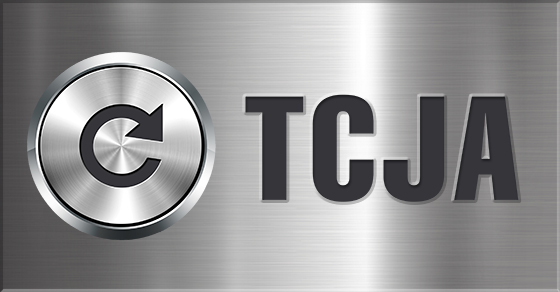The dawning of 2019 means the 2018 income tax filing season will soon be upon us. After year end, it’s generally too late to take action to reduce 2018 taxes. Business owners may, therefore, want to shift their focus to assessing whether they’ll likely owe taxes or get a refund when they file their returns this spring, so they can plan accordingly.
With the biggest tax law changes in decades — under the Tax Cuts and Jobs Act (TCJA) — generally going into effect beginning in 2018, most businesses and their owners will be significantly impacted. So, refreshing yourself on the major changes is a good idea.
Taxation of pass-through entities
These changes generally affect owners of S corporations, partnerships and limited liability companies (LLCs) treated as partnerships, as well as sole proprietors:
- Drops of individual income tax rates ranging from 0 to 4 percentage points (depending on the bracket) to 10%, 12%, 22%, 24%, 32%, 35% and 37%
- A new 20% qualified business income deduction for eligible owners (the Section 199A deduction)
- Changes to many other tax breaks for individuals that will impact owners’ overall tax liability
Taxation of corporations
These changes generally affect C corporations, personal service corporations (PSCs) and LLCs treated as C corporations:
- Replacement of graduated corporate rates ranging from 15% to 35% with a flat corporate rate of 21%
- Replacement of the flat PSC rate of 35% with a flat rate of 21%
- Repeal of the 20% corporate alternative minimum tax (AMT)
Tax break positives
These changes generally apply to both pass-through entities and corporations:
- Doubling of bonus depreciation to 100% and expansion of qualified assets to include used assets
- Doubling of the Section 179 expensing limit to $1 million and an increase of the expensing phaseout threshold to $2.5 million
- A new tax credit for employer-paid family and medical leave
Tax break negatives
These changes generally also apply to both pass-through entities and corporations:
- A new disallowance of deductions for net interest expense in excess of 30% of the business’s adjusted taxable income (exceptions apply)
- New limits on net operating loss (NOL) deductions
- Elimination of the Section 199 deduction (not to be confused with the new Sec.199A deduction), which was for qualified domestic production activities and commonly referred to as the “manufacturers’ deduction”
- A new rule limiting like-kind exchanges to real property that is not held primarily for sale (generally no more like-kind exchanges for personal property)
- New limitations on deductions for certain employee fringe benefits, such as entertainment and, in certain circumstances, meals and transportation
Preparing for 2018 filing
Keep in mind that additional rules and limits apply to the rates and breaks covered here. Also, these are only some of the most significant and widely applicable TCJA changes; you and your business could be affected by other changes as well. Contact us to learn precisely how you might be affected and for help preparing for your 2018 tax return filing — and beginning to plan for 2019, too.
© 2018






